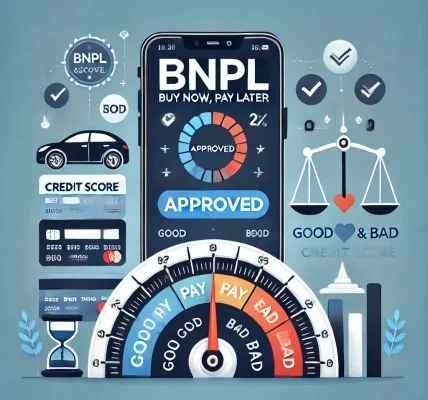Investing in mutual funds is a great way to grow wealth over time while diversifying risk. However, with thousands of mutual funds available in the market, selecting the right one for your investment goals can be overwhelming. A well-researched approach will help you make informed decisions and align your investments with your financial aspirations.
In this guide, we’ll explore how to choose the right mutual fund based on your investment goals, risk tolerance, and time horizon.
1. Understand Your Investment Goals
Before choosing a mutual fund, clearly define your investment objectives. Common investment goals include:
- Wealth Creation – Investing for long-term growth, such as retirement planning or building a financial corpus.
- Income Generation – Earning regular income through dividends or interest, ideal for retirees or those seeking passive income.
- Capital Preservation – Protecting your principal investment with minimal risk.
- Tax Savings – Investing in tax-efficient instruments to reduce tax liabilities.
Understanding your goal will help you select a mutual fund that aligns with your financial needs.
2. Assess Your Risk Tolerance
Risk tolerance refers to how much risk you are willing to take with your investments. Mutual funds come with different levels of risk:
- Low-Risk Funds: Suitable for conservative investors who prioritize capital preservation (e.g., debt funds, liquid funds).
- Moderate-Risk Funds: Ideal for balanced investors who want both growth and stability (e.g., hybrid funds, balanced advantage funds).
- High-Risk Funds: Best for aggressive investors who aim for high returns and can tolerate market fluctuations (e.g., equity funds, sectoral funds).
Knowing your risk tolerance will help you filter out unsuitable funds.
3. Decide on the Type of Mutual Fund
Based on your investment goals and risk appetite, you can choose from different types of mutual funds:
A. Equity Funds (High Risk, High Returns)
Best for long-term wealth creation. Some common categories include:
- Large-Cap Funds – Invest in well-established companies with stable growth.
- Mid-Cap Funds – Invest in mid-sized companies with higher growth potential but increased risk.
- Small-Cap Funds – Invest in small companies with aggressive growth potential but higher volatility.
- Sectoral/Thematic Funds – Focus on specific industries or themes like technology, healthcare, or ESG (Environmental, Social, and Governance).
B. Debt Funds (Low to Moderate Risk, Stable Returns)
Best for conservative investors seeking capital preservation and regular income.
- Liquid Funds – Short-term funds with high liquidity and low risk.
- Short-Term & Ultra Short-Term Funds – Suitable for parking funds for 1-3 years.
- Corporate Bond Funds – Invest in high-quality corporate bonds with stable returns.
- Gilt Funds – Invest in government securities, ideal for risk-averse investors.
C. Hybrid Funds (Balanced Risk, Moderate Returns)
Best for investors seeking a mix of growth and stability.
- Aggressive Hybrid Funds – Invest more in equities and some in debt for balanced risk.
- Conservative Hybrid Funds – Invest more in debt and some in equities for stability.
D. Tax-Saving Funds (ELSS – Equity Linked Savings Scheme)
- Offer tax benefits under Section 80C with a 3-year lock-in period.
- Invest primarily in equities and provide long-term capital appreciation.
Choosing the right type of mutual fund ensures it aligns with your investment goals.
4. Analyze Fund Performance & Expense Ratio
A. Past Performance
While past performance doesn’t guarantee future returns, it helps to check how the fund has performed over 3, 5, or 10 years compared to its benchmark index.
B. Expense Ratio
The expense ratio is the fee charged by the mutual fund for managing your investment. Lower expense ratios mean higher take-home returns.
C. Fund Manager’s Track Record
An experienced and skilled fund manager plays a crucial role in delivering consistent returns. Research the fund manager’s track record before investing.
5. Consider Investment Mode: SIP vs. Lump Sum
A. Systematic Investment Plan (SIP)
- Invest a fixed amount regularly (monthly, quarterly).
- Reduces market timing risks by averaging purchase costs.
- Ideal for salaried individuals.
B. Lump Sum Investment
- Suitable for those with a large corpus ready to invest.
- Best when markets are down and expected to rise.
- Higher risk of market volatility.
Choosing the right investment mode depends on your financial situation and market conditions.
6. Check Tax Implications
Mutual fund returns are subject to taxation based on the holding period and type of fund:
- Equity Funds:
- Short-Term Capital Gains (STCG) (<1 year) – 15% tax.
- Long-Term Capital Gains (LTCG) (>1 year) – 10% tax above ₹1 lakh.
- Debt Funds:
- Taxed as per income tax slab rates for STCG (<3 years).
- LTCG (>3 years) taxed at 20% with indexation benefits.
Understanding tax implications helps in selecting tax-efficient funds.
7. Look for Exit Load & Lock-In Period
- Exit Load: Some funds charge a fee if you redeem before a specific period (e.g., 1% if withdrawn before a year).
- Lock-in Period: ELSS funds have a 3-year lock-in, while other funds may have minimal restrictions.
Ensure you choose funds with minimal exit loads if you need liquidity.
8. Use Online Tools & Ratings
Before making a final decision, use online mutual fund comparison tools and check ratings from agencies like:
- Morningstar
- CRISIL Ratings
- Value Research Online
These platforms provide insights into fund rankings, risk assessments, and return consistency.
Final Thoughts: Making the Right Choice
Selecting the right mutual fund depends on your financial goals, risk tolerance, and investment horizon. Follow these key steps:
- Define your goal (wealth creation, income, or tax-saving).
- Assess your risk appetite (low, moderate, high).
- Choose the right fund category (equity, debt, hybrid).
- Compare fund performance, expense ratio, and taxation.
- Decide between SIP or lump sum investment.
By following a disciplined investment strategy and reviewing your portfolio regularly, you can maximize returns and achieve your financial objectives with mutual funds.




